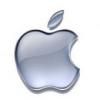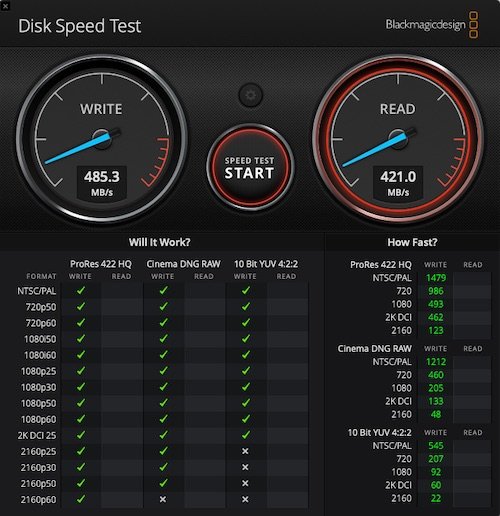-
Posts
10067 -
Joined
-
Last visited
-
Days Won
569
Content Type
Profiles
Articles, News and Tips
Forums
Everything posted by Hervé
-
No issues with SDK as far as I can tell; seems more like some features are missing... Apart from the absence of support for the buttons (and TrackPoint), the TouchPad is otherwise perfectly working. I have tap to click, scroll & zoom, rotate and the various multi-finger gestures. Forces one to operate the Hack like a Mac!
-
Consult our Wireless card inventory in R&D->Wireless & Bluetooth section. Thank you.
-
Recompiled v2.1.6 code for SDK 10.14. Getting the same slow movement behaviour as with the v2.1.4 kext I was previously using and no working buttons/TouchPoint...
-

Dell 5490: Help need to finalise Mojave (almost everything works!)
Hervé replied to frikeando's topic in The Archive
No success, I recompiled the entire VoodooI2C v1.2.6 code for 10.14 DSK and it does not activate any of the TouchPad buttons or the TrackPoint. Mouse movement is also not as smooth as what I obtain with that v1.2.4 version of unknown origin but 10.14 build. v2.1.6_DSK_10.14.zip This being said, it should be noted that most -if not all- gestures offered in the TouchPad PrefPane are supported. And that's pretty good ! -

Dell 5490: Help need to finalise Mojave (almost everything works!)
Hervé replied to frikeando's topic in The Archive
That's what I experienced with my initial I2C kexts until I replaced them with those from James90 5590 pack and which are the same that were in the Clover pack attached to your post #1. 'currently working on recompiling the I2C kexts under Mojave 10.14.4 to try out latest version v2.1.6. -
Re: audio, please refer to my previous post and what you've done... Did you install or inject the kexts as advised? Did you try the various layouts?
-
Weird... If I install any of those v2.1.4, v2.1.5 or v2.1.6 kexts from the Github repo, the Alps TPouchPad of my 7490 is not working at all. If I use the kexts from James90's pack, TouchPad is working. Where is his I2C kext coming from? Was it just a recompilation under Mojave of the v2.1.4 source code? Looking at the GitHub v2.1.4 pack and James90's pack, the 2 x VoodooI2CHID kexts v1.0 are the same. But when I compare the 2 x VoodooI2C kexts v2.1.4, I see no difference in the plists apart from the macOS build (10.14 in the case of James90, 10.12 in the case of the Github repo). I compared the Plugins and they're all identical, even the binary files are the same. So, apart from the macOS version the kexts appear to have been compiled on, I can see no difference, yet one works, the other does not ! Maybe I ought to recompile v2.1.5/v2.1.6 in my Mojave 10.14.4 installation. The repo does mention that v2.1.6 was built using the 10.12 SDK...
-
Make sure you use the latest FakeSMC v6.26-357 + latest APCIBatteryManager v1.90.1. Failing that, try VirtualSMC and its Plugins.
-
Clover boot screen probably does not support 4K because graphics aren't fully initialised during that phase...
-
VGA needs SNB ramebuffer patching as detailed in the HD3000 guide or my E6220 guide. I don't think you can get audio via the docking station jack. I'd have to check again but, from memory, it did not work. HDMI audio will only work if you patch the SNB framebuffer kext in order too inject HDMI output port type. Can't explain your random freezes; as far as I'm concerned, this is one of the best little Hackintoshes I've ever owned, especially as it's 100% working.
-
I initially installed Mojave on an external USB3.0 HDD in order to avoid messing with the Win10 installation that's on the built-in M.2 SATA SSD. Given that the Latitude 7490 can boot from microSD card (needs Legacy boot enabled in BIOS), I installed Clover and the 7490 pack on an old 2GB microSD card I had lying around. Card was initially reformatted FAT32. I now use it to boot Mojave from a freshly created partition on the SSD without having had to mess around with the Win10 Boot (EFI) partition. It works great.
-

Dell 5490: Help need to finalise Mojave (almost everything works!)
Hervé replied to frikeando's topic in The Archive
Yes. -

Dell 5490: Help need to finalise Mojave (almost everything works!)
Hervé replied to frikeando's topic in The Archive
'found the issue: missing NoTouchID kext... -

Dell 5490: Help need to finalise Mojave (almost everything works!)
Hervé replied to frikeando's topic in The Archive
I'd be interesting to hear what you experience if you simply add a green tag to any kext in /S/L/E... -

Dell 5490: Help need to finalise Mojave (almost everything works!)
Hervé replied to frikeando's topic in The Archive
I'll update it once I sort of other nibbles. Tell me, do you experience any lag when modifying a kext in /L/E or /S/L/E? Like when doing something as trivial as adding or removing a colour tag. Every time I do this, I experience lag and spinning beach ball for a few seconds. It's most annoying and I can't explain it so far; it's not linked to SpotLight indexing or screen resolution, I've checked that already. -
All is well since I've been using it. I've no hesitation to recommend it. Once you declare the compatibility, it works 100% OOB, including Bluetooth.
-

Dell 5490: Help need to finalise Mojave (almost everything works!)
Hervé replied to frikeando's topic in The Archive
Isn't it what I just wrote? NB: No need to quote every message you directly reply to. In fact, it's quite annoying... -

Dell 5490: Help need to finalise Mojave (almost everything works!)
Hervé replied to frikeando's topic in The Archive
Are you talking about the EFI attachment of post #1? The I2C kexts inside appeared a little different than those I got from Jake's original pack: same version but different kext size. I used them and Touchpad movement is now perfect, the rest being the same (buttons and TrackPoint not working). -

Dell 5490: Help need to finalise Mojave (almost everything works!)
Hervé replied to frikeando's topic in The Archive
As I clearly stipulated in my guide, this ALPS I2C Touchpad works poorly at the moment. I need to look into this. I don't know if it requires more development or simply adjustment/tuning through the plist. Other than the movement, it seems to work fine: 2-finger tap for contextual (right button click) menu, tap clicking, 2-finger scrolling, etc. -
Nawcom disappeared from the Hackintosh scene long ago but tribute can still be paid to him and his great tools. It sure is dated today but it did the business back in the days and greatly so. These may still be useful for those novices who want to setup a Hackintosh on a platform capable to run Snow Leopard but have no access to a Mac or an existing Hack. Snow Leopard remains the Mac OS X version from which many platforms can upgrade to subsequent OS X/macOS versions as long as their profile (SMBIOS) meets the requirements. Provided one has the Snow Leopard retail DVD or a USB key with retail SL restored to it, Nawcom's modCD or modUSB can be very useful to setup a temporary basic SL installation to work from. It does not have to be fully tuned up... Nawcom's tools are hard to find on the Net today, so here are copies it. I hope (and think) Nawcom would not mind... OSX86_ModCD-032311-151021.zip -> rename from .zip to .iso and burn the image to a CD/DVD (can be done from Windows or Linux) OSX86_ModUSB.pkg.zip -> unzip this Mac app and run from OS X to create a bootable USB installer (cannot be used in Windows/Linux) For those who wish to know more about the tools, here's a recap written by the man himself back in 2010: Nawcom_tuto.pdf.zip
-
ALC256 is supported with AppleALC. Install latest version of Lilu + AppleALC kexts and experiment with the applicable layouts. https://github.com/acidanthera/AppleALC/wiki/Supported-codecs For Sleep, did you disable hibernation and remove the sleep image file?
-

Help installing mojave on Acer Predator helios 300 pleaseeee
Hervé replied to toussaintjames's topic in The Archive
GTX 1060 is a Pascal GPU and is therefore unsupported under Mojave. This is why it'll need disabling (through SSDT patching) more than ever. Generally speaking, dGPUs need disabling in Hackintosh laptops because Optimus technology (dual graphics) is not supported by OS X/macOS. Your Qualcomm wireless card is unsupported too and will require to be replaced by a compatible model. Alternatively, you'll have to use a compatible USB adapter. Check out non-exhaustive inventory available in R&D->Wirleess section to that affect. With regards to your IOReg (which you extracted properly with the provided app), I can see that the nVidia dGPU remains enabled whilst the Intel HD630 iGPU is not active. This is where we need to concentrate.- 30 replies
-

Dell 5490: Help need to finalise Mojave (almost everything works!)
Hervé replied to frikeando's topic in The Archive
What Broadcom wireless card do you have in place? Did you inject or install CodecCommander along AppleALC when using audio layout 11? -

D630 Snow Leopard installation help or guidelines
Hervé replied to retro-pc_user's topic in The Archive
Hi, you may refer to the following threads: BIOS settings for the D630 Bootpacks for the D630 The best method for those laptops is to use myHack app for installation. Snow Leopard requires myHack version v3.1.2, available here. myHack requires you to have: access to a Hack or a Mac a copy of Snow Leopard retail DVD or a USB key with retail SL image restored to it a copy of the bootpack (the Extra folder) applicable to your computer myHack can then be used to: create the USB installer that you'll use to install SL on your D630 tune up your D630 in the post-installation phase If you don't have access to a Hack or a Mac, you can still install SL with Nawcom's modCD. It's a bootable CD that will allow you to install SL on your D630 provided you have the SL retail DVD or a USB key with the SL retail image restored to it. The installation will not be perfect because you will not be able to use our provided bootpack (the Extra folder) but you'll be able to have SL installed with minimal functionalities. From there on, you can either complete the post-installation tuning where you'll add our bootpack and finalise your SL installation or create a new myHack USB installer with our bootpack that'll get you SL fully installed directly. I started with Nawcom's modCD all those years ago since I did not have access to a existing Hack or Mac... Those old D Series laptops are a bit long on the tooth these days but they made excellent platforms as Hackintoshes and are close to full support on the hardware side. You'll need to pay particular attention to the wireless card you have as it may require tuning or replacement. Check our FAQ section for details. The GMA X3100-based version that you have supports OS X up to Lion 10.7.5. Mountain Lion is possible with the old MLPF trick which reverts the kernel and kexts back to 32/64bit versions of DP1. It works but it's not bug-free... -




